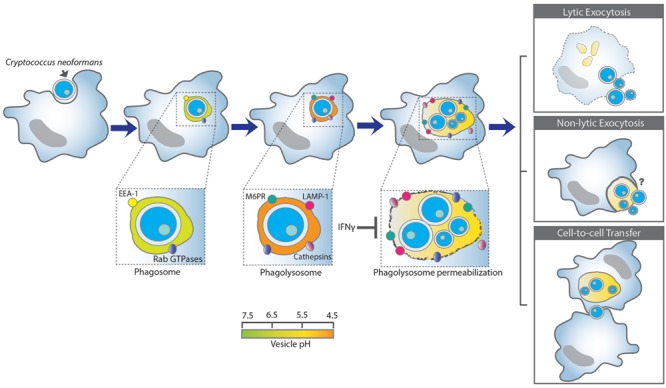FIGURE 1.

A schematic summary of the Cryptococcus neoformans and macrophage interaction. Upon internalization Cn reside within phagosomes that mature into phagolysosomes by interacting and fusing with the early- and late- endosome, and lastly with the lysosome. Cn-containing phagolysosomes acidify shortly to around pH 4.3 but increased later to 5.3, which is less acidic than the normal phagolysosomal of pH 4.5 (Levitz et al., 1999). Phagolysosomal membrane permeabilization could contribute to the increase in pH, possibly by affecting the proton gradient require to maintain acidification and/or promoting leakage of contents into the cytoplasm and vice-versa. Phagosomal membrane damage favors Cn replication and survival. In contrast, IFN-γ reduces phagolysosomal membrane damage and promotes Cn killing (Davis et al., 2015). Phagosomal membrane integrity appears to be a key determinant of whether Cn lives or dies after ingestion. Intracellular Cn survival and replication can have three major outcomes: (1) lysis of the macrophage and release of Cn; (2) non-lytic exocytosis in which both the macrophage and Cn survive (non-lytic exocytosis can be complete or partial), and (3) cell-to-cell transfer in which one macrophage can pass a previously ingested Cn to another macrophage.
